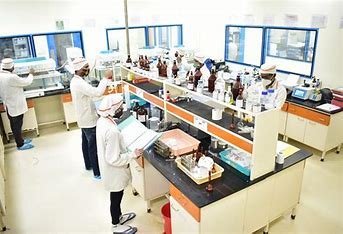“Explore the essential laboratory controls in cGMP under Subpart I. Understand testing, sterility, acceptance criteria, and quality assurance methods crucial for pharmaceutical quality.”
Examine the depths of Subpart I and how it corresponded to drug quality control so that even end consumers could leverage the quality product.Important topics covered include testing and release for distribution, sterility and objectionable microorganisms, sampling plans and testing plans, acceptance criteria and statistical quality control, validation of test methods, reprocessing & product rejection.
Introduction to Laboratory Controls in cGMP
Knowledge and compliance with these standards are essential to build public confidence, uphold the profession’s integrity, and protect patients.
Testing and Release for Distribution
This consists of a compliant lab analyzing to guarantee each batch of drug product meets all final specifications prior to release (section 211.165). It is really important to protect the patients and prove that the therapies work.
This ensures that no inferior or harmful product is made available for sale, and trustworthiness in pharmaceuticals is restored.
The Importance of Sterility Testing
Although, section 211.165(b) does stress on the requirement of adequate laboratory testing for sterility and objectionable microorganisms, This rigorous testing acts as the last line of defense in preventing potential health hazards that can occur due to microbial contamination.
Following these regulations, pharmaceutical manufacturers show they are dedicated to making safe and effective products that meet high standards for safety and quality.
Sampling Strategy and Testing Plans for Statistically Valid Results
Section 211.165(c) highlights the need to have sampling and testing plans laid out so that there is uniformity in how samples are taken and methods of testing used across different batches of product.
Written procedures of these plans are essential to ensure a constant and reliable testing process, so that the manufacturer can decide with confidence and more awareness about releasing each batch.
Rigorous acceptance criteria and allow statistical quality control
Section 211.165(d) goes further to establish exacting acceptance criteria and statistical quality control measurements with the critical involvement of a quality control unit. Thus, the relevance of these criteria is fundamental to analyze the batches and ensure that pharmaceutical products are manufactured according to quality and compliance guidelines.
Manufacturers utilize statistical quality control criteria which allow them to observe process variances, identify trends and act upon this information such that they can then make intelligent decisions to maintain product quality at a level that assures patient safety.
Ensuring Test Methods Are Valid to Generate Meaningful Results
Section 211.165(e) explicitly advises that accuracy, sensitivity and reproducibility of test methods need to be documented. Their validation guarantees their precision. These methods are used to test the quality of a product ensuring confidence in the laboratory results obtained.
Conversely, manufacturers gain confidence in the analytical procedures they utilize through extensive validation studies to ensure accurate and repeatable results.
Implementing Sound Reprocessing and Product Rejection Practices
Sec.211.165(f)– identifying steps that should be taken when drug products are not meeting established standards. If done correctly, reprocessing enables manufacturers to correct any deficiencies identified, and to rescue suspect non-compliant products prior to release when they comply with the product’s original stringent quality standards.
Conclusion: Ensuring Pharmaceutical Quality through Compliance
With this broad coverage, product integrity and safety are never compromised under any circumstances arising during the manufacturing process.
Reach out to BioBoston Consulting today or visit our website for more information on how we can assist your company.


